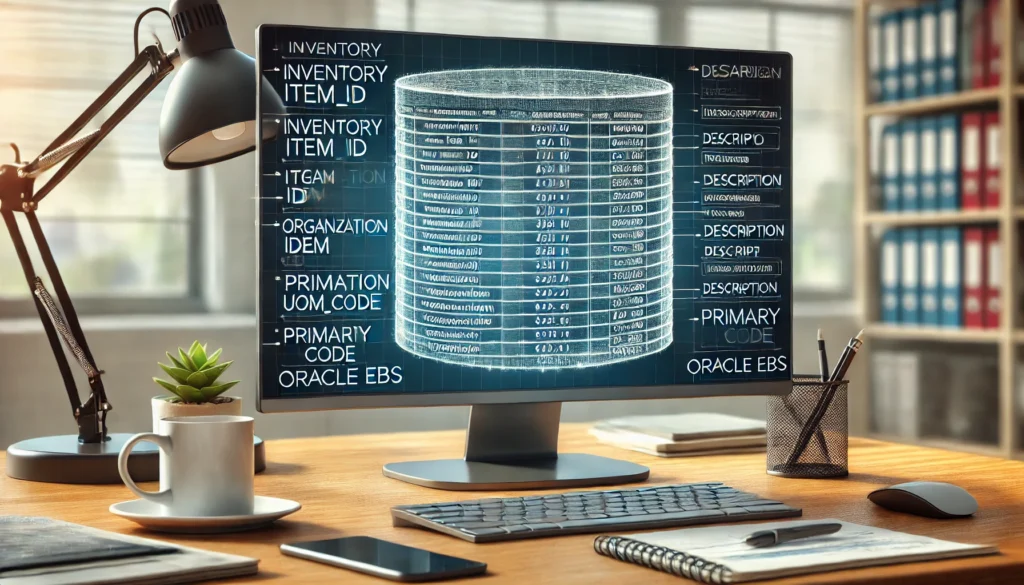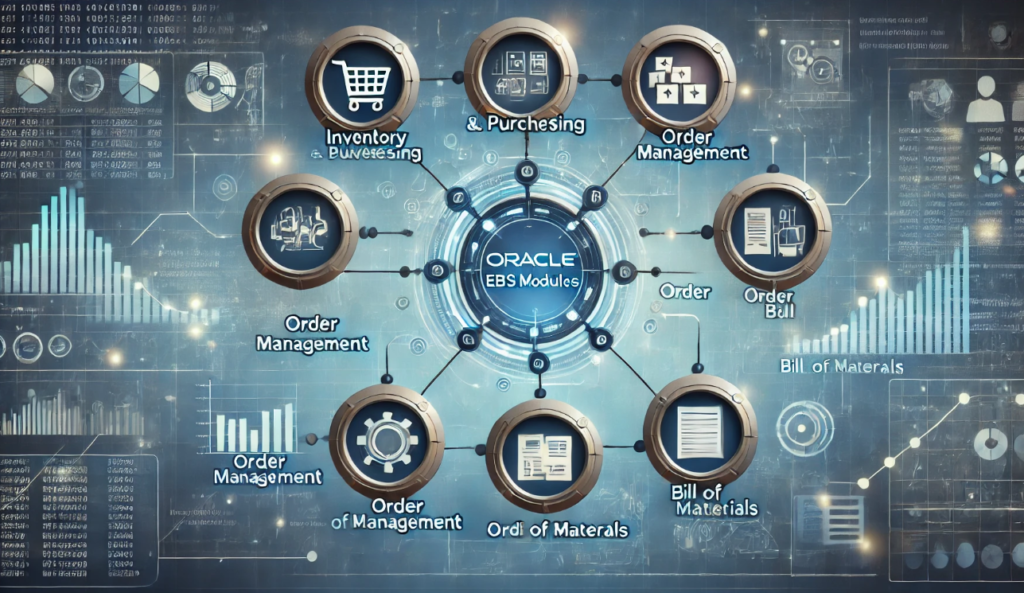Introduction to MTL System Items – Item Type
In Oracle E-Business Suite (EBS), the MTL_SYSTEM_ITEMS_B table plays a critical role in managing inventory, purchasing, and engineering items. This table is the cornerstone of item definitions, allowing businesses to organize, track, and manage their products effectively. By understanding the MTL_SYSTEM_ITEMS_B table and the concept of item types, organizations can enhance operational efficiency and streamline their inventory processes.
This guide delves deep into the intricacies of MTL_SYSTEM_ITEMS_B, focusing on item types, their attributes, categorization, and how they integrate with other modules. Whether you’re a seasoned Oracle EBS user or a newcomer, this resource will equip you with the knowledge needed to master MTL System Items.
Table Structure and Key Columns
The MTL_SYSTEM_ITEMS_B table is designed to store item-related data across multiple organizations. Each item is uniquely identified by a combination of INVENTORY_ITEM_ID and ORGANIZATION_ID. Here’s a breakdown of its structure:
| Column Name | Description |
| INVENTORY_ITEM_ID | Unique identifier for the item. |
| ORGANIZATION_ID | Identifier for the organization. |
| DESCRIPTION | Text description of the item. |
| PRIMARY_UOM_CODE | Primary unit of measure for the item. |
| SUMMARY_FLAG | Indicates if the item is a summary item. |
| ENABLED_FLAG | Denotes if the item is active. |
Additionally, the table supports 20 descriptive flexfields (SEGMENT1 to SEGMENT20), which allow businesses to customize item attributes.
Item Attributes and Flags
The attributes stored in MTL_SYSTEM_ITEMS_B determine an item’s behavior across Oracle EBS modules. Here are some of the most critical flags and their meanings:
- Purchasable Items:
- PURCHASING_ITEM_FLAG indicates whether an item can be purchased.
- PURCHASING_ENABLED_FLAG shows if the item is available for procurement.
- Inventory Items:
- INVENTORY_ITEM_FLAG identifies if the item can be stocked and transacted.
- STOCK_ENABLED_FLAG denotes whether the item is eligible for stockkeeping.
- Shippable and Orderable Items:
- SHIPPABLE_ITEM_FLAG determines if the item can be shipped to customers.
- CUSTOMER_ORDER_FLAG specifies if the item is orderable by customers.
- Engineering and Manufacturing:
- ENG_ITEM_FLAG indicates if the item is associated with engineering.
- BOM_ENABLED_FLAG allows the item to be part of a Bill of Materials.
Defining and Categorizing Item Types
An item type in Oracle EBS is defined by a combination of attributes that specify its purpose. For instance, a “Finished Good” might have flags enabled for inventory, purchasing, and shipping, while a “Raw Material” might only have the inventory flag activated.
The MTL_ITEM_CATEGORIES table helps classify items into category sets. By assigning categories, businesses can:
- Simplify reporting and analysis.
- Group similar items for streamlined management.
- Align inventory structure with operational needs.
Integration with Other Modules
The MTL_SYSTEM_ITEMS_B table integrates seamlessly with various Oracle EBS modules:
- Purchasing: Links items to suppliers and procurement processes.
- Inventory: Tracks stock levels, transactions, and valuations.
- Order Management: Manages customer and internal orders.
- Bill of Materials (BOM): Structures components for manufacturing.
- Work in Process (WIP): Oversees production activities.
This interconnectedness ensures that item data is consistent and accessible across the system.
Best Practices for Managing Items
Maintaining accurate and consistent item definitions is vital for efficient operations. Here are some tips:
- Regular Audits: Periodically review item attributes and categories to ensure alignment with business needs.
- Use Descriptive Flexfields: Customize item attributes using SEGMENT1 to SEGMENT20 for greater specificity.
- Avoid Duplication: Implement naming conventions to prevent duplicate item entries.
FAQs
- What is the purpose of MTL_SYSTEM_ITEMS_B?
This table serves as the master repository for item definitions in Oracle EBS. - How can I define a new item type?
By configuring specific flags in the MTL_SYSTEM_ITEMS_B table and categorizing the item appropriately. - Can items belong to multiple categories?
Yes, items can be assigned to multiple categories within different category sets. - How does multilingual support work for item descriptions?
The MTL_SYSTEM_ITEMS_TL table stores translations, while the DESCRIPTION column in MTL_SYSTEM_ITEMS_B is maintained in the base language. - What happens if an item is disabled?
Disabled items cannot be used in transactions or processes until re-enabled.
Conclusion
Understanding MTL_SYSTEM_ITEMS_B and item types is essential for effective inventory and procurement management in Oracle EBS. By leveraging this table’s capabilities, businesses can categorize items efficiently, maintain data integrity, and optimize operations across modules. With the insights provided in this guide, you’re well-equipped to master MTL System Items and drive organizational success.
Recommended Articles
$50 Towing Near Me: Your Ultimate Guide to Affordable Towing Services
Saab 4228805 Hose: Comprehensive Guide
The Ultimate Guide to the Loreo 3D DSLR Lens: Features, Usage, and Comparisons
The Ultimate Guide to Etome: Everything You Need to Know
How much does it cost to replace motor mounts?



